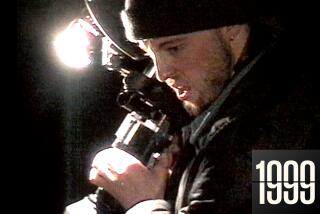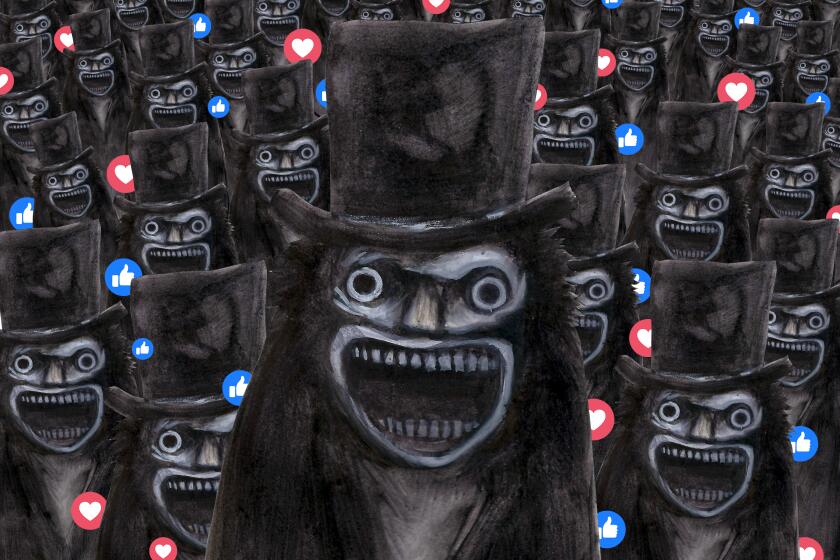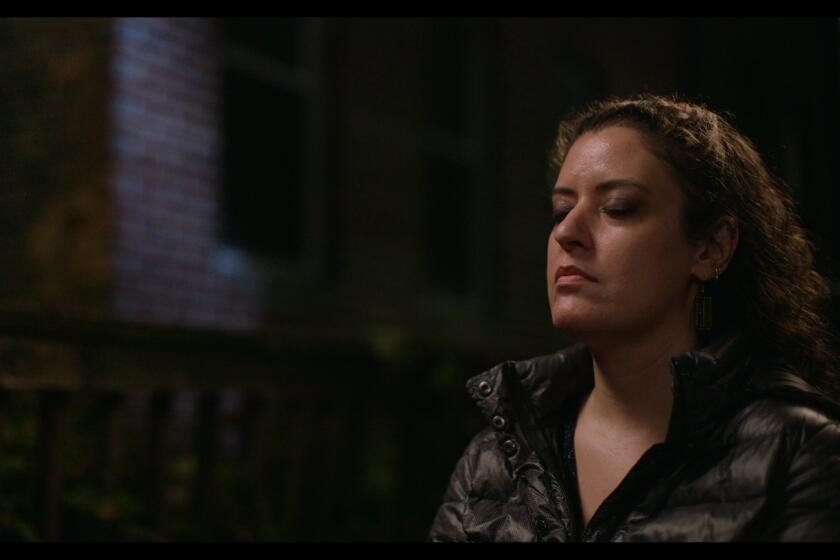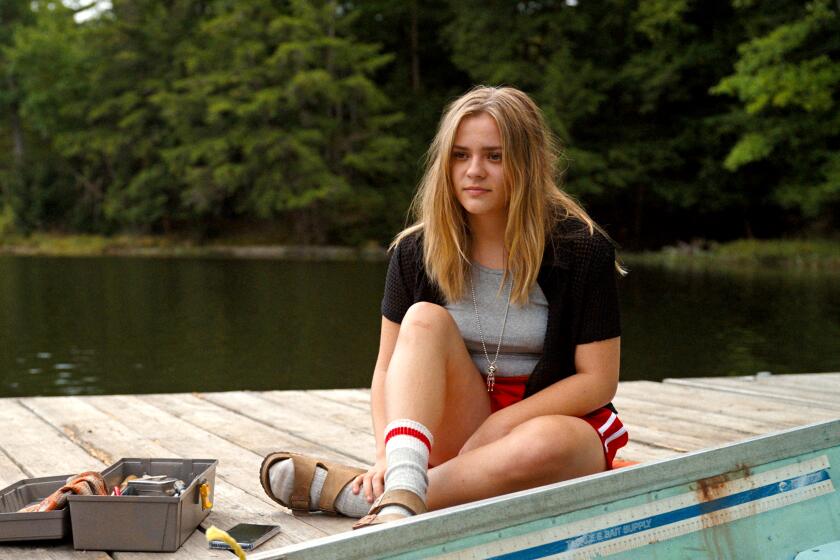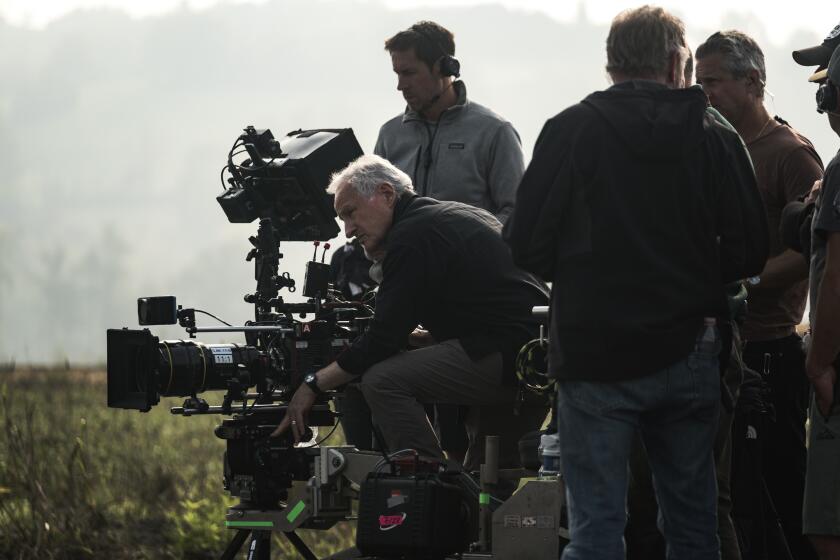First Person: Barry Levinson goes digital for ‘The Bay’
In a bygone age, there were movie palaces. They were ornate and grand. And as you sat in your seat, you looked to a large, red velvet curtain. Behind it, hidden from view, the silver screen. And they made you wait to see it. It was that special. Then suddenly there were images that you could see through the curtain. And there it was, the glorious movie screen.
But that’s gone. That was another time.
Today, the screen can be big or small. We can watch a film on IMAX, we can watch on our iPhone. We can stop it. Restart it. Back it up. Freeze-frame it. And speed through the slow parts. The magic and sheer thrill of it all might be gone, but this
PHOTOS: Hollywood backlot moments
is the world we live in. This is a digital age, and anyone with a camera, as cheap and raw as it may be, can tell a story.
It is against this backdrop that I made “The Bay,” an eco-thriller/horror film, or what some would call a sci-fi/sci-fact or outbreak/disaster film. The lack of a definitive genre scares the studio, but that’s another story.
“The Bay” is a reconstruction of events that took place in a small town in Maryland. It was made for a little over $2 million, using more than 20 digital platforms.
We used the concept that this would be like a modern-day archaeological dig of digital material in order to understand the events and how the people reacted to an environmental crisis. In some ways, this is the first generation that provides a certain intimacy into their private lives. In some ways, if this were to be categorized as a found-footage film, we would expand on that concept by a hundred.
The challenge of re-creating all those events that played out in the course of that one day required us to rethink previous visual techniques. You have to abandon classical cinematic form and composition. There’s a fundamental difference between how someone handles a consumer product and how a professional would approach a subject. Larger cameras were on dollies or, more recently, Steadicam. But those who use consumer cameras simply hold them in their hand. Sometimes they might shoot from their waist or any way they choose. So, in a certain fashion, the language of film composition changes. Classical form is challenged.
PHOTOS: Celebrities by the Times
The fun of working with such raw products is that it forces you to rethink editing — in some scenes, you really can’t do any editing. As an example, we have a scene with a teenage boy and girl down by the water. We would like to see both of them, but how? We don’t have the freedom to do a master shot. So how do you handle that type of a sequence?
Eventually, the scene played with some simple choreography. The male teen is videotaping his girlfriend. She gets bored, grabs the camera from him (now we see him). As he walks toward the pier, she approaches, which moves us into a close-up. He grabs the camera from her (and now we see her walking onto the pier).
We follow her as she prepares to jump in the water. She leaps in. Something in the water scares her. We can hear his concern. She begins to splash and flail in pain. And then he leaps. We know this because we see the camera floating through the air and then splashing into the water. And as the camera is sinking, we see images of the two teenagers struggling with something that must be very deadly.
The sequence had to play in one shot, and it had to be filmed by the actors themselves on a $200 Sony waterproof camera. It created challenges for us, but at the same time, it was exciting to explore ways to give credibility to the style of the film.
PHOTOS: Hollywood backlot moments
There were a number of hold-your-breath moments in the shoot. Not frightening in a story sense, but because many of the products have no video playback while you are filming. You have to hope that the coverage that is needed is actually being recorded. And when I say recorded, I have to include that the actor actually hit the record button. (It is easy to laugh about that, but it happened more than once).
Ironically, when our cinematographer does some of the filming, he needs to duplicate the crudeness and the nonsophistication of a video that would go on YouTube. As to the picture quality, we decided after testing rather extensively that it would be best to use actual consumer products rather than working with high-end professional equipment that would be degraded later in post-production. No matter how much we beat up the video from the consumer cameras in Final Cut, it still looked too good.
So, what will be the next steps in digital storytelling? It may be hard to imagine at the present time, but an analogy could be made to music. When the synthesizer first began, it tried to mimic the violin, the guitar, the trumpet. And then it evolved into a sound that we’d never heard before. Its own sound. The visual storytelling of tomorrow may be beyond our grasp at the present time.
This digital revolution will change the way we tell stories. It will challenge the convention of today and it will redefine the distribution of film for tomorrow. There will be many who will lament what was, and there will be many more who never knew what was.
Levinson is an Academy Award-winning director, screenwriter and producer whose credits include “Diner,” “Rain Man,” “Bugsy,” “The Natural” and “Wag the Dog.” His most recent film, “The Bay,” opens theatrically and on video on demand Friday.
PHOTOS AND MORE:
PHOTOS: Hollywood back lot moments
The Envelope: Awards Insider
PHOTOS: NC-17 movies: Ratings explained
More to Read
Only good movies
Get the Indie Focus newsletter, Mark Olsen's weekly guide to the world of cinema.
You may occasionally receive promotional content from the Los Angeles Times.


